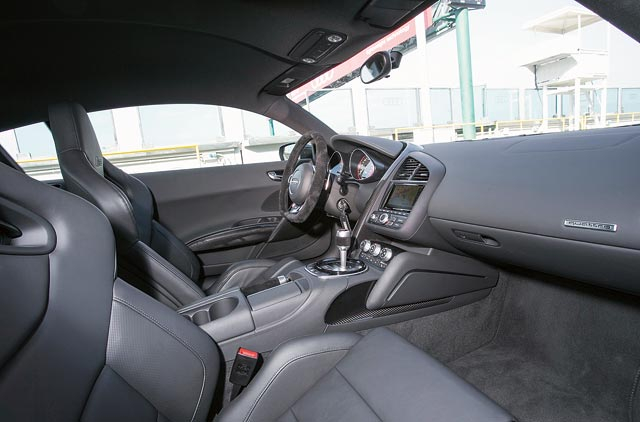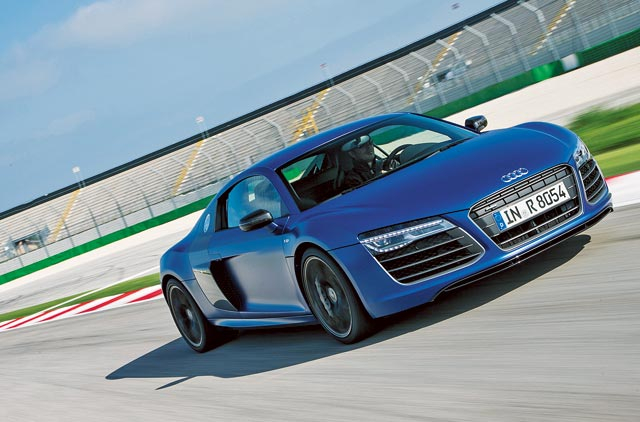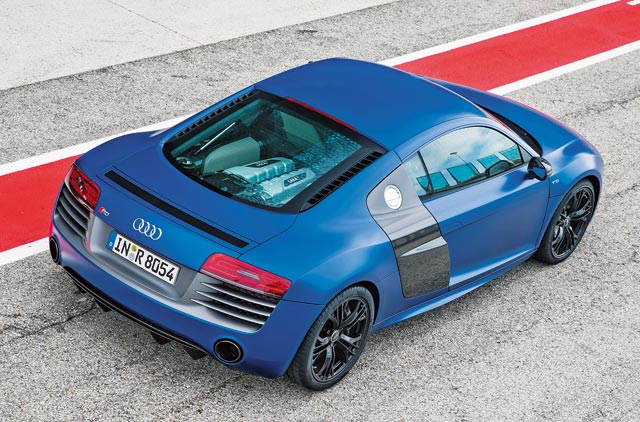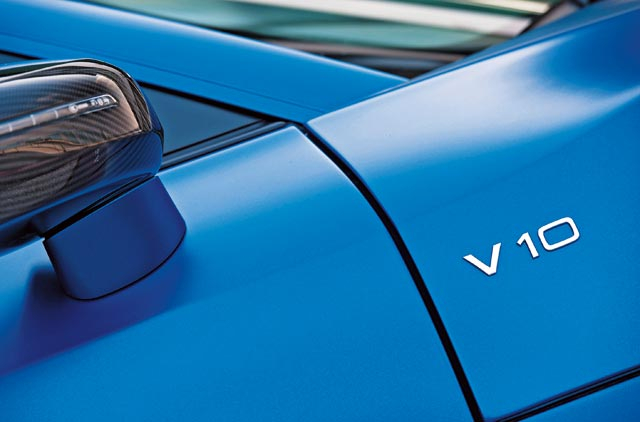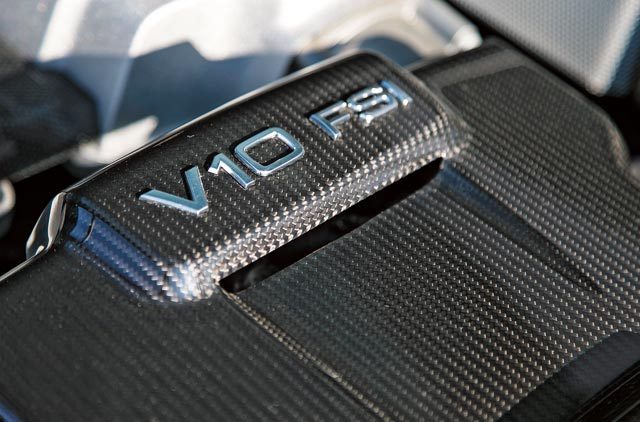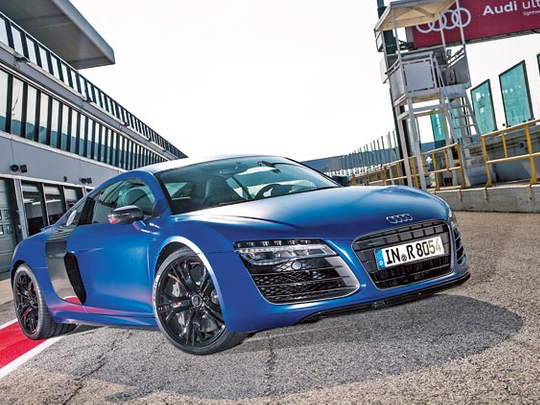
So, who really started it all, this everyday-usable supercar thing? Today you can jump into your Ferrari 458 Italia and get a bagful of zucchini at the grocery store without anything catching fire (well, most of the time). When you’re done flashing your platinum credit card at the till, why not get back into your Italia and sit there in front of the entrance revving the bolts off that 4.5-litre V8 while you’re at it? The temperature gauge isn’t going anywhere.
This would’ve been a preposterous notion 20 years ago. But in 1990, a little Honda came along and changed all that, forever altering the world’s perspective on supercars. With the NSX, you could pretend you’re Senna one minute, and then idle quietly in traffic like Massa the next.
I like to preach to anyone who’ll listen (usually my dog), that it was in fact the 1978 BMW M1 that was the first truly usable supercar, but sadly Motorsport GmbH built too few of them (less than 500) to attract the deserved reputation.
Thinking about it now, astoundingly, there has been almost no usable mid-engined German supercar since the M1. Porsche’s Carrera GT doesn’t count, because that cost eleventy billion dollars, Mercedes-Benz only dabbled with mid-engined supercars in concept form (if you don’t count road-registered Le Mans prototypes). And that leaves us with only Audi to carry the black, red and yellow flag of mid-engined daily-driver supercar pride.
When the Le Mans Quattro concept first appeared in 2003, everyone went mental for it, and three years later, the production car sent us all into another frenzy, mostly because of the legendary sideblades that seemed to garner more attention than the pure excellence of the car’s impeccably balanced chassis and ease of use. When the R8 Spyder was launched, for example, with its soft top necessitating a profile rethink, the major point of critics’ concerns was, “But, no sideblades…”
So if, for some reason, you weren’t initially a fan of the R8 Coupé, your futile arguments were always settled when your opponent concluded with, “But, sideblades…” There’s no comeback to that.
You’ll be happy to know, then, that the 2013 redesigned Audi R8 retains its sideblades. It’s not bad, either, that the 2013 R8 gains more power, a new transmission, and more swanky LEDs.
The extra power, we should mention, is only available on the new-for-2013 R8 Plus, which hikes up the 5.2-litre V10 engine’s figure to 550bhp, while the regular R8 5.2- and 4.2-litre V8 models stay pegged at 525bhp and 430bhp respectively.
We drove the whole range of cars in Italy, at the Misano race track and the surrounding hills of San Marino. We’ll focus on the R8 Plus and the greatest single update to the car, the new seven-speed transmission.
Although the next-generation R8 will dispense with a manual completely, you can still spec any R8 you want with the old six-speed manual. Of course, that’s totally out of the question in the Middle East, so every Audi R8 ordered by the local dealers will come with the new S tronic, featuring closer gear ratios except for the final drive, which is wider for cruising and fuel efficiency. This is now a dual-clutch unit, making the old single-clutch R tronic seem even more rubbish than it was — uncomfortable and jittery in traffic, and too violent on the move.
The new seven-speed is sublime in every scenario, imperceptibly shifting in Normal mode and throwing in just the right amount of kick-in-the-back in Sport mode. Audi still includes steering wheel paddles, which, although too small and non-mechanical in feel, give the 2013 R8 an improved level of connectivity with the driver.
Gear changes take just a few hundredths of a second, and the compact (less than 60cm long) transmission now sends 15 per cent of the torque to the front axle, with a maximum of 30 per cent heading forward in certain conditions, such as if the rear detects too much slip.
At the rear axle, there is still a proper mechanical limited slip differential, and the chassis is unchanged, featuring double aluminium wishbones front and rear.
Only our R8 Plus gets special suspension settings for the dampers and springs, with extra front camber dialled into the wheels to boot.
Our Misano track experience in the R8 Plus was one of the best yet, simply because an Audi minder threw me the keys and flagged me off. Never mind the monsoon that came down right there and then, after previous groups of journalists from all over the world had nothing but glorious sunshine
for days. Oh well, Quattro will save my skin.
Not really. The first turn is a second gear job — as are most of the others around Misano except for one sweep that is taken with only a slight lift in fifth gear — and, unshackled by the pit exit, I floored the throttle then stomped on the brakes, only to immediately lock up and miss the entry. The rest of my seven laps of Misano were spent with traction control switched on, which was absolutely crucial in these underwater conditions. And that’s how the Audi’s biggest flaw reared its ugly, electronic head.
The electronics in the R8 are constantly panicking and grappling for grip, with the extremely intrusive TC completely interrupting power. It’s just a kill switch basically. If this electronic nanny was actually a nanny, it would receive a visit from child protection services. At every corner exit, any amount of throttle flipped the tail wide, as the TC lagged for a moment and then abruptly put an end to it all.
On the road, a smooth right foot is the way to go, as the shorter gear ratios allow more power to reach the road, more of the time.
The 2013 Audi R8 retains its famed steering feel and a quick ratio. With all-wheel drive and such instant steering action, you will often cross your arms through the switchbacks instead of shuffling the tiller, making the R8’s squared-off steering wheel ideal for the job. Yet I did find myself wishing for a normal round steering wheel for those times when you have to let the rudder spring neatly back to centre and just skim through your fingers. Skim is the right word, because everything about the 550bhp R8 Plus is delicate and tranquil, since the car’s perfectly balanced chassis belittles the 1,570kg kerb weight — it feels hundreds of kilos lighter than that, like an all-wheel drive, V10-power-fed Lotus, meaning the R8 is still the most approachable supercar out there. Even in a monsoon. However planted and assured it is, it’s now been made even better simply with the logical addition of a dual-clutch gearbox.
The rest of the changes for 2013 are mainly cosmetic: new bumpers and standard carbon-fibre splitter on the Plus, gloss-black grille, repositioned and redesigned LED headlights and taillights, carbon-fibre-reinforced plastic mirrors, side blades and air intake, and more LEDs illuminating the engine.
Audi was also quite boastful of the rear lamps, which mimic the Ford Mustang’s sequential indicators. The rest of the rear is dominated by a large diffuser pulled upwards and flanked by twin tailpipes painted black on the Plus.
Going back to that kerb weight, the Plus is up to 90kg lighter than the Spyder, and only 10kg heavier than the V8 R8, thanks to glass fibre bucket seats, less insulating materials (which doesn’t really deprive occupants of comfort at all), unique alloy wheels and standard ceramic brakes.
The V10 Plus then, with 540Nm of maximum torque at 6,500rpm, understandably trumps the lot with a 0-100kph time of 3.5 seconds (there is launch control with the S tronic) and goes on to 317kph, while the standard V10 manages 3.8 seconds and 311kph respectively. I never even got close in either car with the rain we had at Misano, but you could easily do it on your way to the shops. Just don’t forget to rev it to eight grand, paying no attention to any temperature gauges at all.


